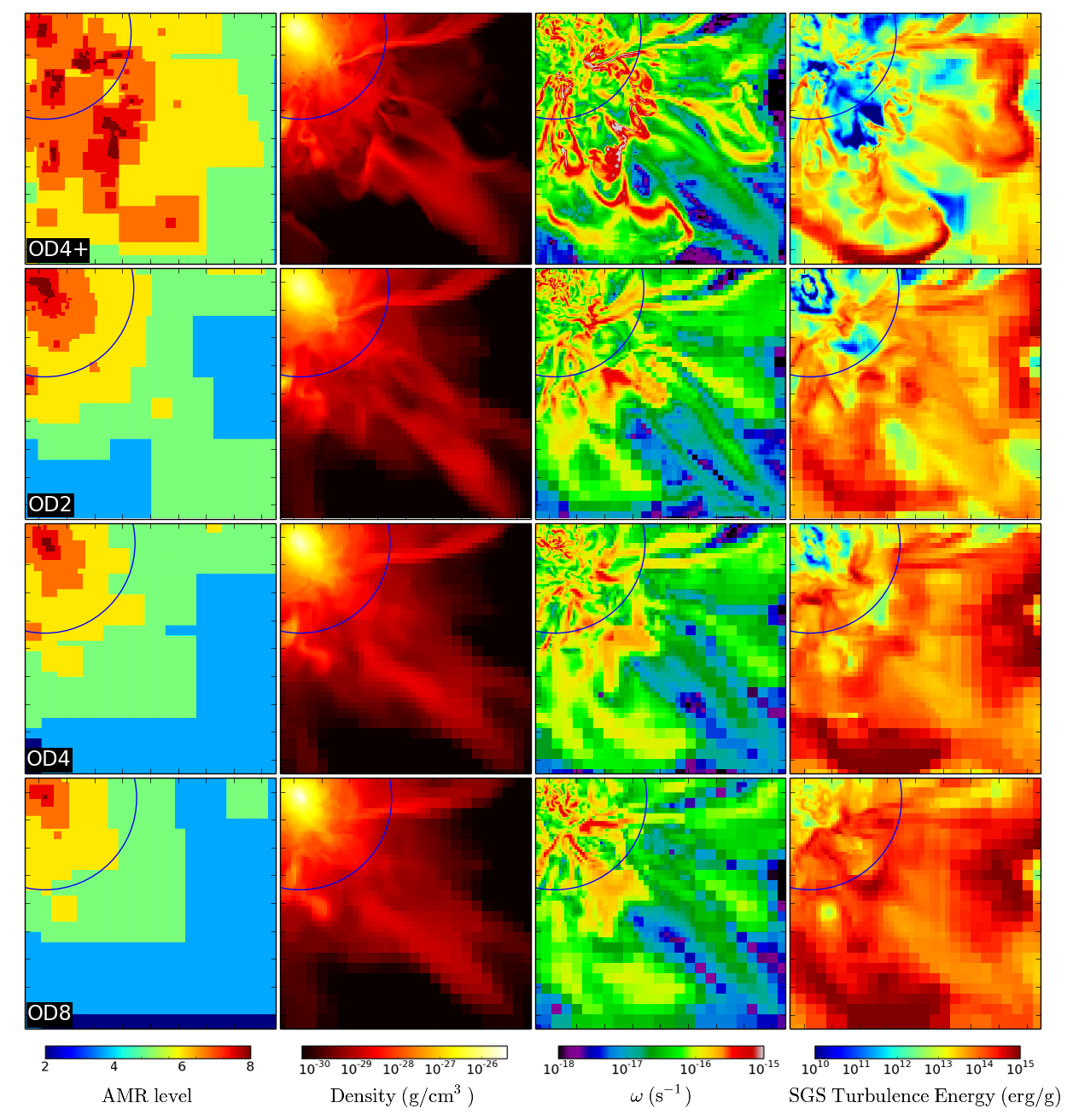Research in astrophysics
Resolving and modelling the turbulent flow in the cluster outskirts
The outskirts of galaxy clusters are characterised by the interplay of gas accretion and dynamical evolution involving turbulence, shocks, magnetic fields and diffuse radio emission. The density and velocity structure of the gas in the outskirts provide an effective pressure support and affect all processes listed above. Therefore it is important to resolve and properly model the turbulent flow in these mildly overdense and relatively large cluster regions; this is a challenging task for hydrodynamical codes.Many astrophysical fluids, presumably including the Intracluster Medium (ICM), have a very large Reynolds number. As a result, the length scale separation between the integral length scale for turbulence injection and the Kolmogorov scale for its viscous dissipation is so large that it cannot be resolved in state-of-the-art direct numerical simulations, even using adaptive mesh refinement. In many fields of computational fluid dynamics, the influence of unresolved turbulence on the resolved scales is therefore modelled by means of heuristic subgrid-scale models, coupled to the large scales of the system, for which the fluid equations are solved.
In my research activities in astrophysics I used grid-based simulations of galaxy clusters and focus mainly on two numerical tools:
- Adaptive mesh refinement (AMR) suitable for refining the injection of turbulence in the ICM. This is based on the regional variability of vorticity and is more effective in resolving the turbulent flow in the cluster outskirts than any previously used criterion based on overdensity.
- Subgrid scale model (SGS) for unresolved turbulence. The turbulence SGS model provides a quantity, the SGS turbulence specific energy, which is a useful indicator of small-scale turbulence and its time evolution during a merger event, in combination with the kinetic energy used as a large-scale diagnostic.
For further works of mine in astrophysics, please refer to my publication list, as reported by the following ADS search.
